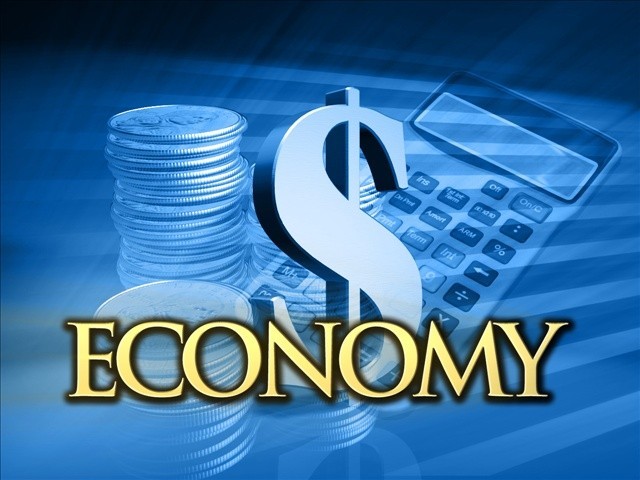WASHINGTON (AP) -- Americans cut back on spending at retail businesses in October, an indication that some remain cautious about the economic outlook. Superstorm Sandy also depressed car sales and slowed business in the Northeast at the end of the month. Wholesale prices also dropped during the month.
The Commerce Department said Wednesday that sales dropped 0.3 percent after three months of gains. Auto sales fell 1.5 percent, the most in more than a year.
Excluding autos, gas and building materials, sales fell 0.1 percent. That followed a 0.9 percent gain in September for that category. Online and catalog purchases fell 1.8 percent, the most in a year. Electronics and clothing stores also posted lower sales.
The government said Sandy "had both positive and negative effects" on sales. Some stores and restaurants closed and lost business. Others reported sales increases ahead of the storm as people bought supplies.
"Looking past (Sandy's) impact, U.S. consumers appeared to dial it back a notch," said Robert Kavcic, an economist at BMO Capital Markets. "There was relatively broad-based weakness in this report."
In September, retail sales jumped 1.3 percent. Spending rose in nearly all categories. The buying spree helped lift economic growth in the July-September quarter and reflected growing consumer confidence. Consumer spending drives nearly 70 percent of economic activity.
The October decline in retail sales may be temporary, economists said. Kavic noted that auto sales may pick up in November as Americans replace cars damaged by the hurricane.
Superstorm Sandy hit the East Coast on Oct. 29 and disrupted businesses from North Carolina to Maine. The storm also lowered auto sales last month by about 30,000, according to TrueCar.com. Overall, car sales dipped to an annual pace of 14.3 million in October, down from a 14.9 million pace in September.
The storm cut retail spending in the Northeast by about 20 percent last week, according to MasterCard Advisors' SpendingPulse, a retail data service. That figure excludes auto sales.
The Northeast accounts for about 24 percent of retail sales nationwide, the MasterCard Advisors' report said. It typically generates $18.7 billion in sales for the week ended Saturday. But sales that week fell to about $15 billion.
The storm also cut power to roughly 8 million homes and businesses. Some are still without power. That may have had an impact on online sales.
Retail sales are likely to rebound this month, analysts said, because Americans are spending more on repairs and making up for lost shopping trips.
The Commerce Department's retail sales report is closely watched because it is the government's first look at consumer spending each month.
Hiring has picked up in recent months, which has boosted consumer confidence. Employers added 171,000 jobs in October and job gains in August and September were higher than first estimated. The unemployment rose to 7.9 percent from 7.8 percent as more of those out of work began searching for jobs.
A survey by the University of Michigan last week found that consumer sentiment improved for the fourth straight month to its highest level in five years.
WHOLESALE PRICES ALSO FALL
Wholesale prices fell in October as a big drop in gasoline and other energy prices offset a rise in the cost of food.
Wholesale prices dipped 0.2 percent last month, the Labor Department said Wednesday. It was the first decline since May and followed big gains of 1.1 percent in September and 1.7 percent in August, increases that had been driven by spikes in energy.
Energy prices retreated a bit in October, dipping 0.5 percent but food costs were up 0.4 percent as the summer drought continued to put pressure on some food prices.
Core prices, which exclude food and energy, fell 0.2 percent in October, the biggest drop in two years. Over the past year, core prices were up a moderate 2.1 percent, evidence inflation remains under control.
In October, the fall in energy costs included a 2.2 percent drop in gasoline prices, the biggest since July, and a 3.3 percent decline in home heating oil costs.
Gas prices averaged $3.44 a gallon nationwide on Tuesday, down 35 cents from a month ago, according to a survey by AAA's Fuel Gauge.
The 12-month rise in core prices of 2.1 percent reflected a moderation from the start of the year. Core wholesale prices were up 3.1 percent for the 12 months ending in January.
"Inflationary pressures at the producer level are moderate and have been slowly retreating in recent months," said Stephen Wood, chief economist at Insight Economics.
The rise in food costs was led by an 8.1 percent increase in the price of pork, the biggest spike in four years. The summer drought in the Midwest has driven up food costs include the cost of beef and pork because animal feeds made with corn have increased in price.
The 0.2 percent drop in core prices in October reflected in part big declines in the price of passenger cars and light trucks. Without those declines, core prices would have been unchanged.
Low inflation means consumers have more money to spend, which helps the economy. It also gives the Federal Reserve more room to keep interest rates low in an effort to spur economic growth. If prices were to begin rising rapidly, the central bank might be forced to raise rates in response.
Economists believe that the modest gains in wholesale prices should translate into further moderation in consumer inflation, keeping it close to the Fed's 2 percent inflation target and allowing the central bank to keep focusing its policy on efforts to boost economic growth and reduce the unemployment rate.
The government will issue its October report on consumer prices on Thursday and economists are also expecting moderation at the retail level because of falling gas prices.
Friday
April 19th, 2024
11:05PM









